To answer your first question, "What causes sumi?" no one knows for sure. There has been no scientific research done on the characteristic in its biology or genetics. However it does seem to be a characteristic that is unique to Neos.
Quote:
Originally Posted by Shoreguy

Is it merely a dark anthocyanin?
|
This is a common misconception, but the answer to the question is:
Absolutely not.
While many sumi varieties also have strong pigmentation, and those varieties exhibit darker pigmentation along the sumi lines, sumi itself is a characteristic separate from pigmentation.
In fact, the "original" sumi variety, Suminagashi, is unable to produce anthocyanins (green stem, green root) and exhibits sumi without any anthocyanin pigmentation whatsoever.
 This is a close up of Surusumi, a selection of Suminagashi clearly showing it's sumi lines with no pigmentation. (Image Source: 富貴蘭の栽培記: 青物3点)
This is a close up of Surusumi, a selection of Suminagashi clearly showing it's sumi lines with no pigmentation. (Image Source: 富貴蘭の栽培記: 青物3点)
The Sumi characteristic initially presents itself most often as slightly translucent, slightly glossy streaks on the top or bottom surface of the leaf. Sumi can sometimes be subtle, presenting as fine, slightly indented linear striations on the surface of the leaf, and sometimes it will show as wide obvious streaks.
In some varieties like Suminagashi and Surusumi, there's no further change from there. However, in most sumi varieties, the lines of sumi also have a tendency to additionally pick up strong anthocyanin pigmentation, which in combination with the translucent green of the line, looks near black. In a yet a few other varieties, the sumi lines will also develop at some point, tan, raised, corky scar tissue on top.
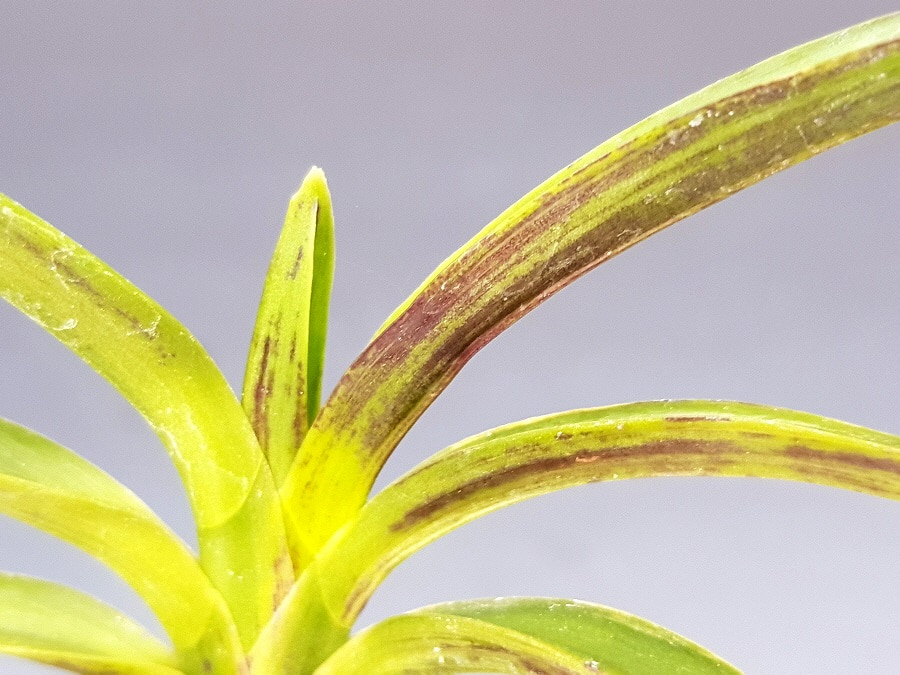 A high exposure image of Jinmuk showing pigentation on top of the sumi. (Image Source: 바람풍란원 - 즐거운 온라인 쇼핑공간에 오신 것을 환영합니다!)
A high exposure image of Jinmuk showing pigentation on top of the sumi. (Image Source: 바람풍란원 - 즐거운 온라인 쇼핑공간에 오신 것을 환영합니다!)
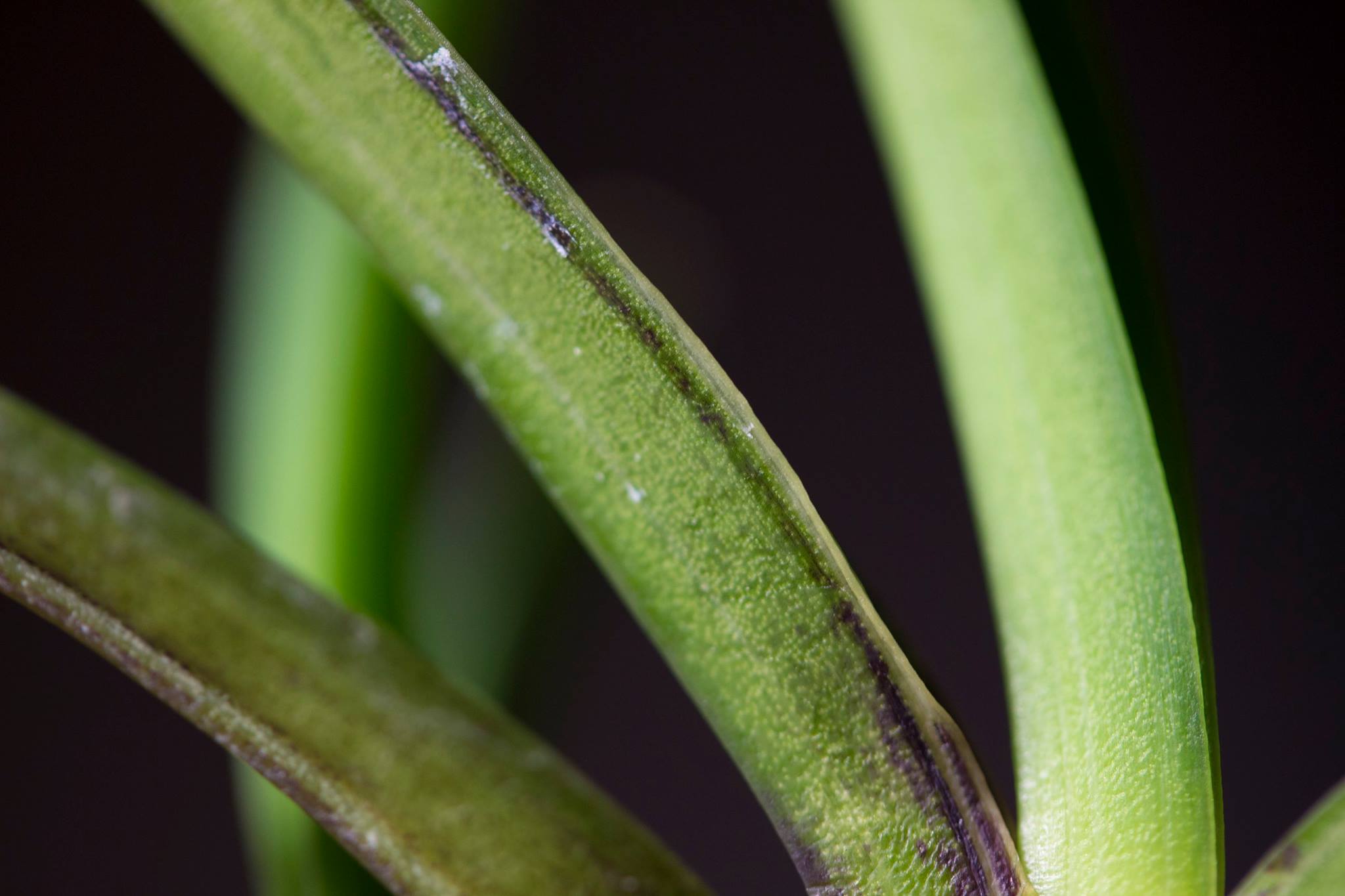 When seen from a distance, the pigmented type of sumi will often look like a solid black line...
When seen from a distance, the pigmented type of sumi will often look like a solid black line...
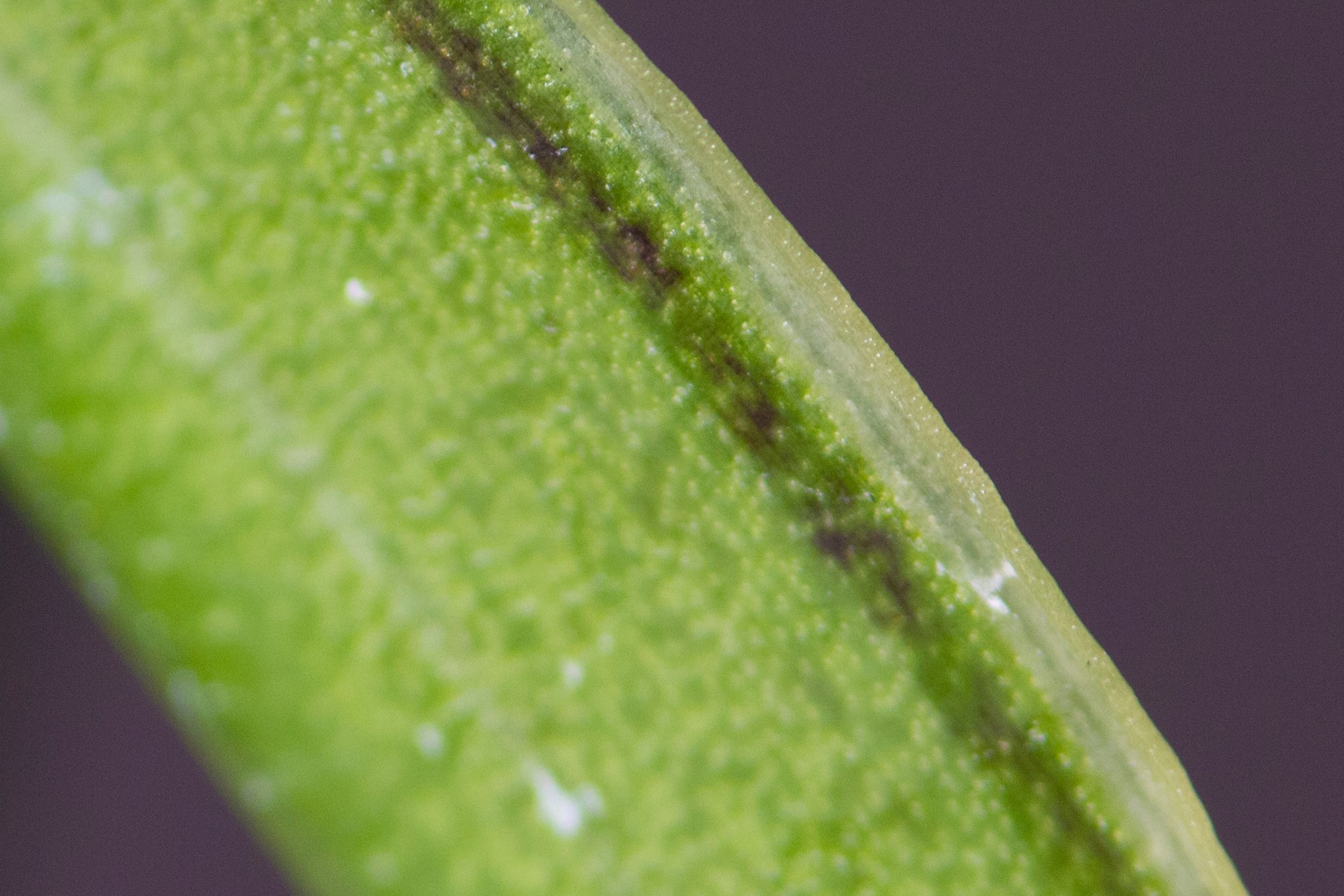 ...however, when seen up close, it's evident that the pigmentation is not evenly distributed within the sumi line, and it is the translucency that makes the line look consistently dark.
...however, when seen up close, it's evident that the pigmentation is not evenly distributed within the sumi line, and it is the translucency that makes the line look consistently dark.
The best way to recognize sumi is to look at the surface texture or luster of the leaf. Wide streaks of sumi will have a distinctively different luster and will look translucent green in some angles, but have a glossy sheen in others.
When the sumi lines are very narrow or fine, it's hard to see a difference in luster, but the surface texture of the leaf will indicate the presence of the sumi.
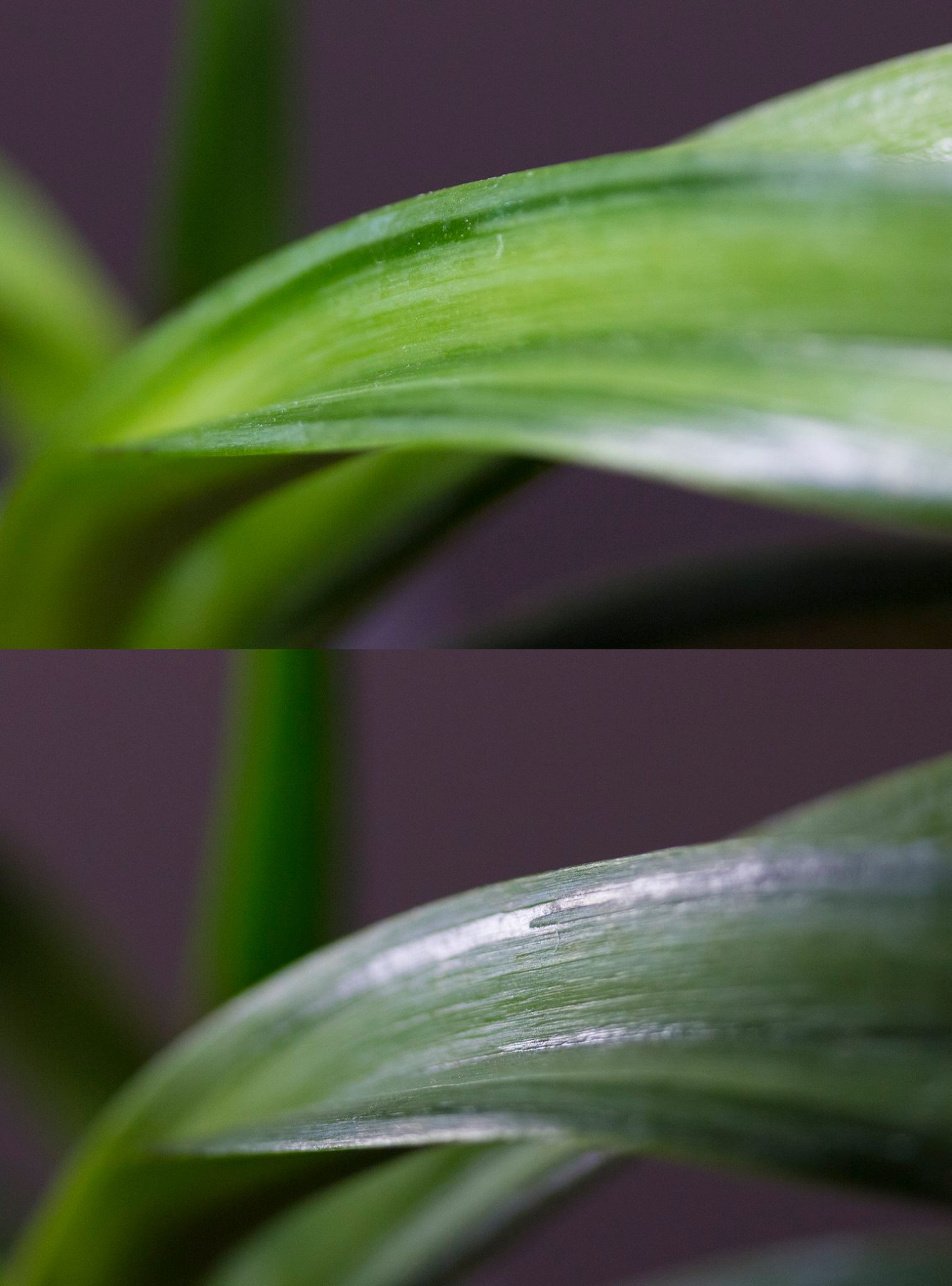 These two photos were taken of the same spot on this plant, but at different lighting angles. The difference is luster is clearly visible between the two photos.
These two photos were taken of the same spot on this plant, but at different lighting angles. The difference is luster is clearly visible between the two photos.
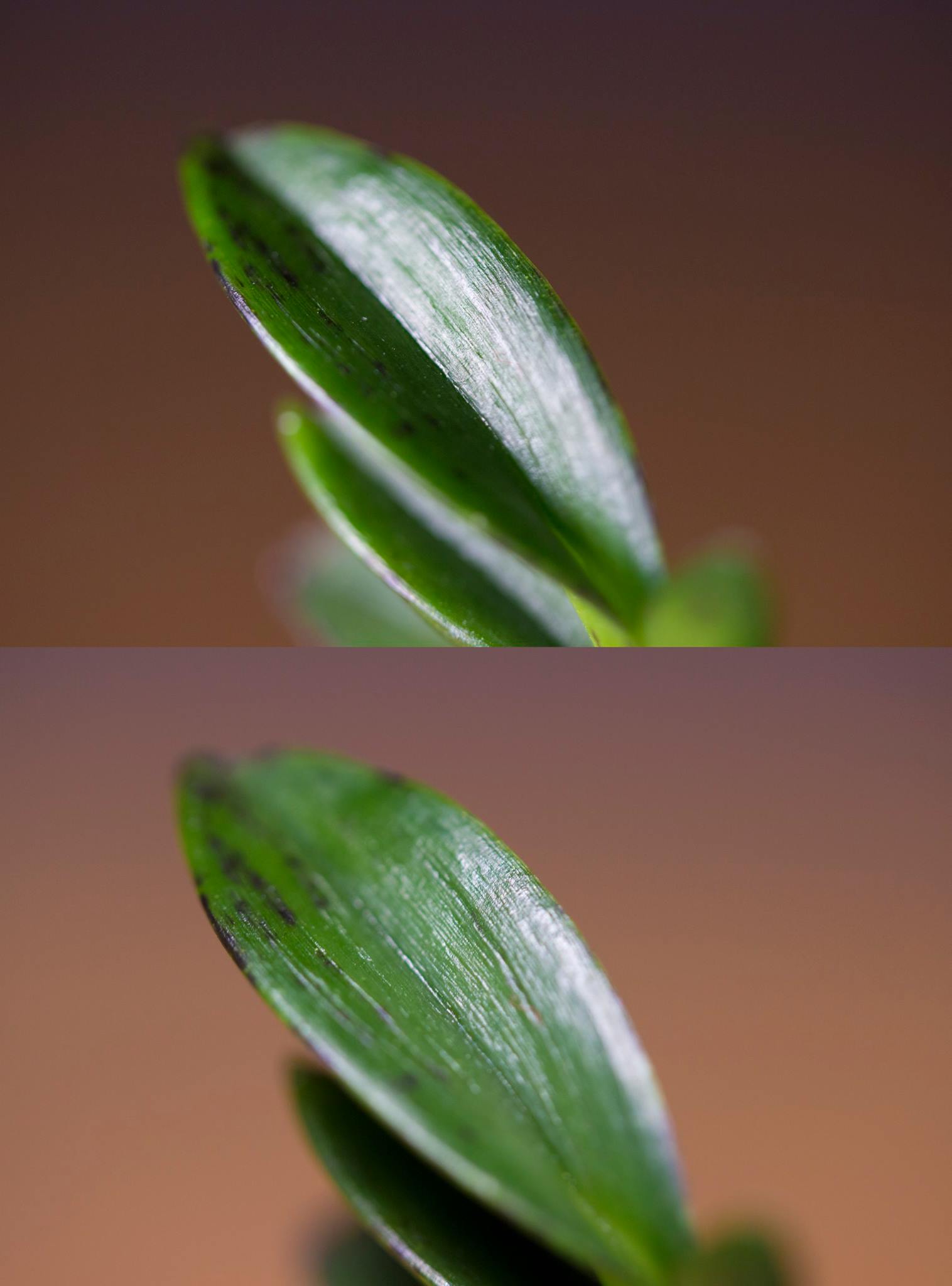 These two photos were taken of the same spot on this plant, but at different lighting angles. The sumi lines are fine, but the texture of the leaf reveals their presence.
These two photos were taken of the same spot on this plant, but at different lighting angles. The sumi lines are fine, but the texture of the leaf reveals their presence.
 This photo shows pigmentation WITHOUT sumi. These two photos were taken of the same spot on this plant, but at different lighting angles. There is no difference in luster of the leaf in areas with and without pigmentation.
This photo shows pigmentation WITHOUT sumi. These two photos were taken of the same spot on this plant, but at different lighting angles. There is no difference in luster of the leaf in areas with and without pigmentation.
The second way to recognize sumi only works on the back of the leaf. On sumi lines, the pattern of the stomata is interrupted, with fewer visible stomata within the sumi lines.
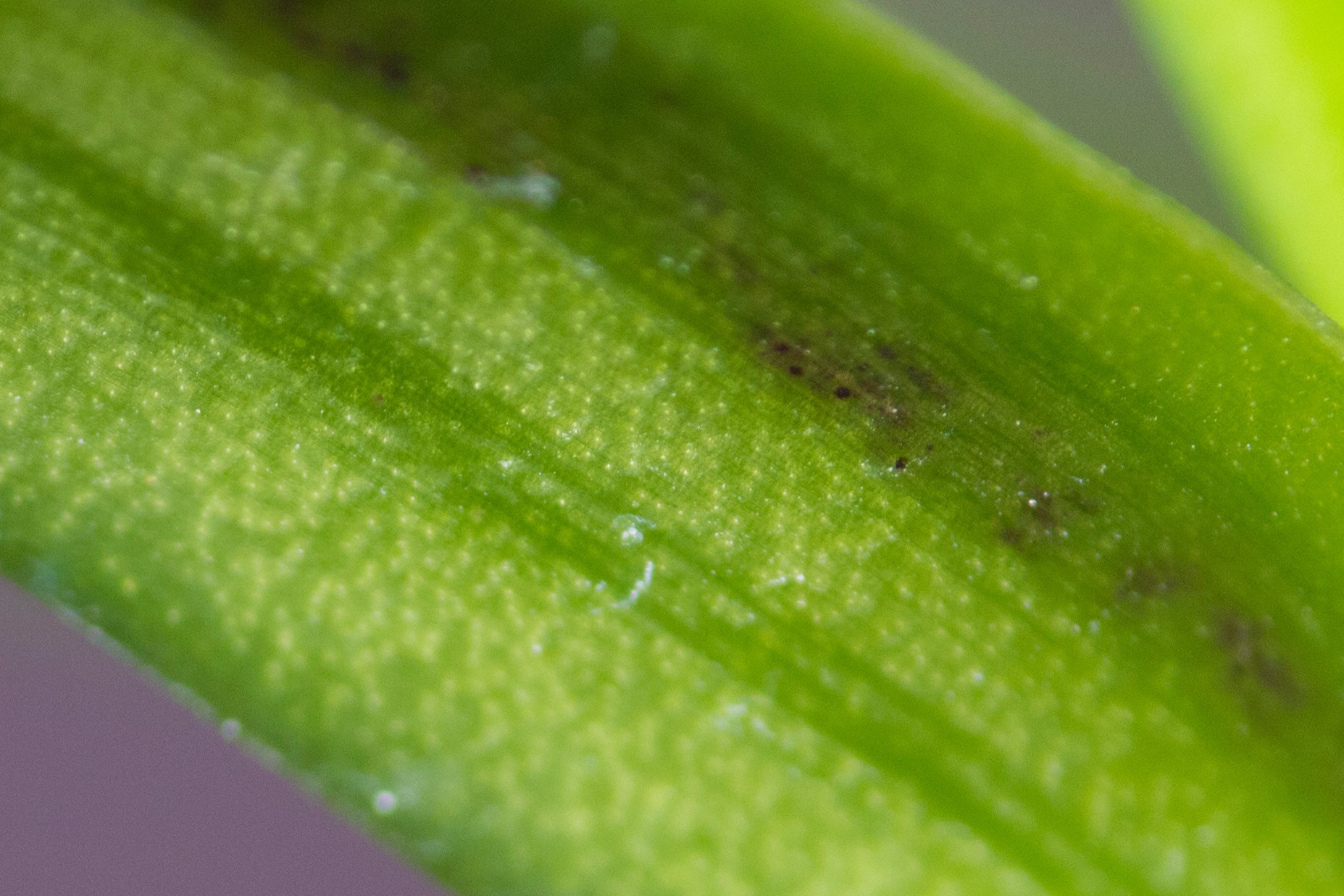 The translucency of the sumi lines as well as the interruption in the stomata is clearly visible on the back of this leaf.
The translucency of the sumi lines as well as the interruption in the stomata is clearly visible on the back of this leaf.
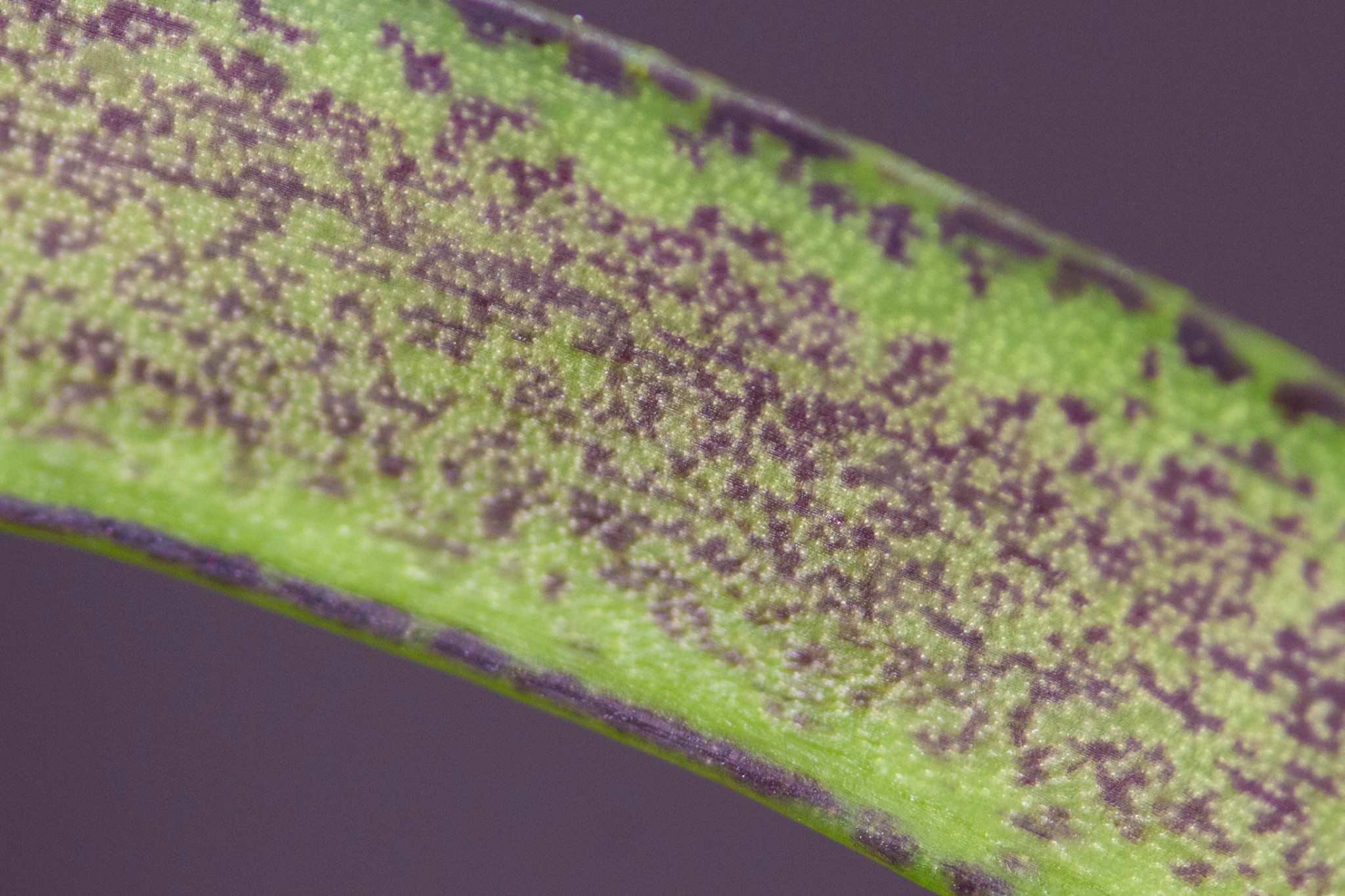 This photo shows pigmentation WITHOUT sumi. It's clearly visible that the pigmentation does not affect the pattern of the stomata.
This photo shows pigmentation WITHOUT sumi. It's clearly visible that the pigmentation does not affect the pattern of the stomata.
The last thing to mention is that even on a fully matured leaf, pigmentation is variable depending on temperature and light levels. Sumi however, will not change or shift position once the leaf has matured. Because of this, a strongly pigmented sumi line may lighten in color in certain conditions, but the luster, texture and stomata placement will remain the same.
Quote:
Originally Posted by Shoreguy

If not, how can neos which exhibit such be encouraged to exhibit more?
|
All of the information regarding how to encourage more sumi that I have found so far is purely anecdotal. However, the most common suggestion is to grow the plant in high light (within reason!).
However, there are some considerations to take into account.
Sumi, like Shima, is variable across each specimen and variety. Some varieties naturally show more, some show less. Even if it's possible to encourage more or less sumi, there may be limits to what a variety or a plant may be able to create.
It is also important to understand that not all specimens of a sumi variety will exhibit the sumi characteristic. In the same way that a shima variety can sometimes let out a solid green growth, a sumi variety can sometimes let out a growth with no sumi at all.
Lastly, the more sumi that is present on a plant or an individual growth, the slower and smaller it will tend to grow. Because of this, it is evident that an excess amount of sumi is detrimental to the plant, and a good balance is needed.








































 Linear Mode
Linear Mode

